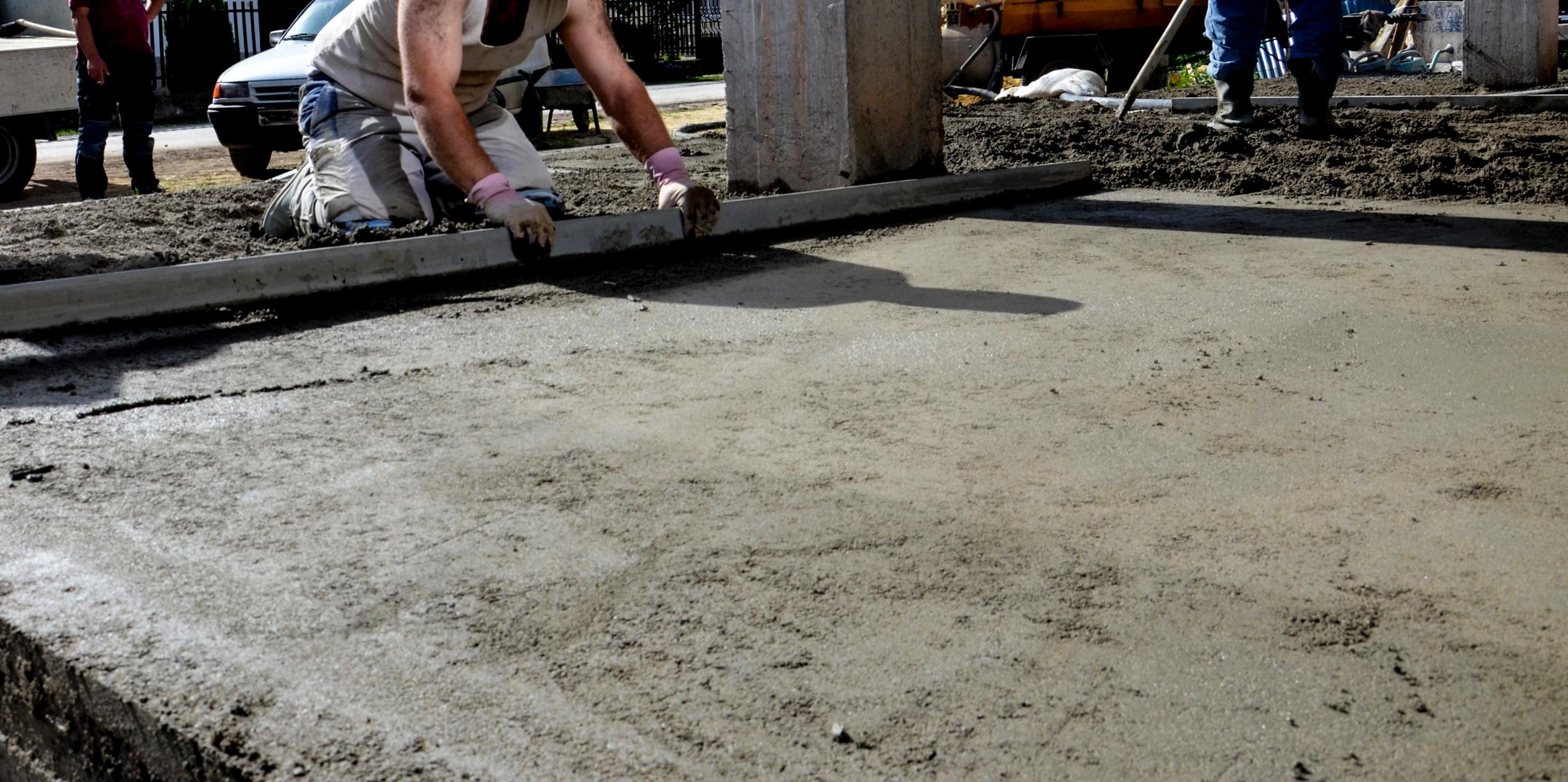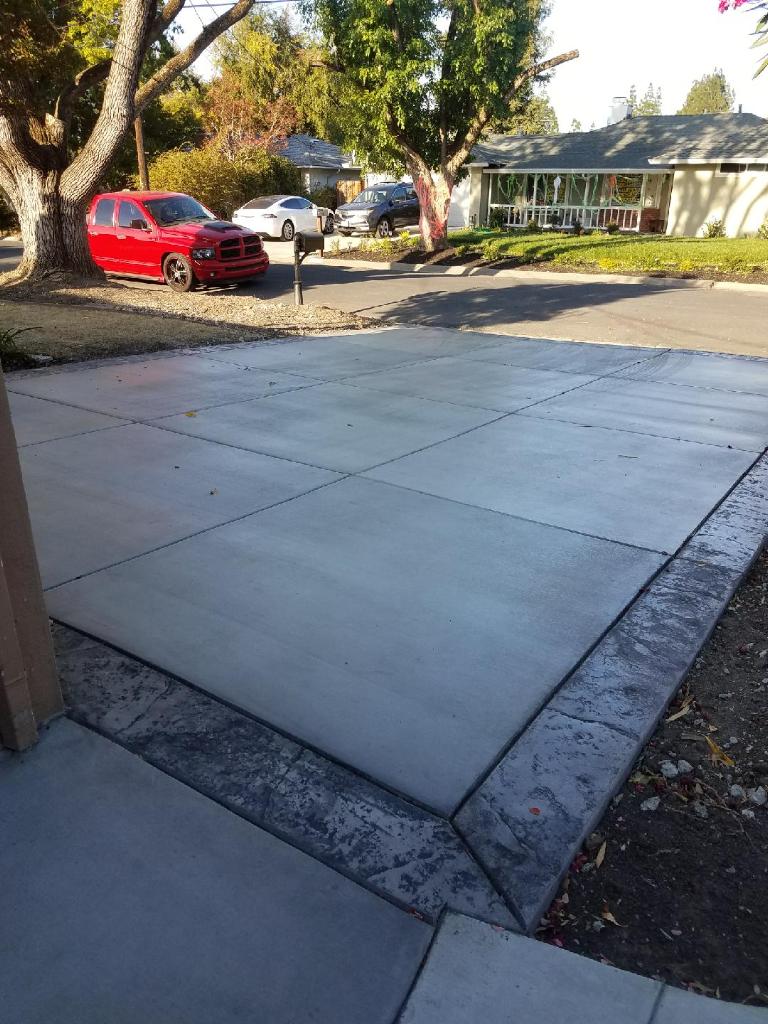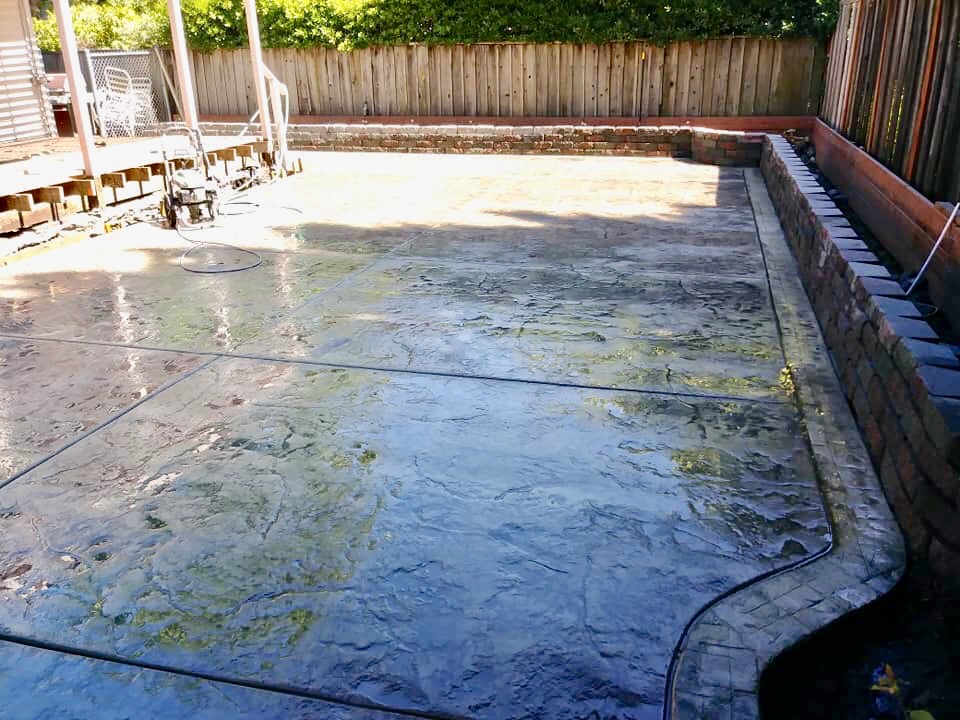Can You Put New Concrete Over Old Concrete?
Make no mistake, there are times where tearing out old concrete and starting again with a compacted stone or sand foundation is the safest option. For example, if the slab has big working cracks and the concrete has settled to the point that it is at several stages, it should be removed.
Similarly, if tree roots are causing the old asphalt to heave, it’s better to rip it up, fix the root issues, and start again. Perhaps the height of door thresholds or stair risers is a concern, and you can’t pour much deeper without causing issues. Both of these are compelling excuses to rip out the old concrete and start again.
If the concrete is relatively sound and a few inches of elevation does not cause problems, you can pour fresh concrete directly on top of the existing. Maybe not directly on top of the old. You’ll need to add a bond breaker to prevent the two slabs from bonding together.
What happens when you bond old concrete with new concrete?
Some gaps in the original slab can migrate up into the new slab if new concrete is bonded to the old within a day or two. Cracks inside sawed or tooled crack control joints are examples.
Present fractures can not move to a bond breaker such as plastic sheeting, roofer’s felt (tar paper), or a coating of sand or stone between the new and old concrete. The slabs would be held apart.
Crack control joints, on the other hand, must be installed when appropriate to prevent random cracking. Crack control joints can be spaced closely together in thinner concrete slabs than in full-depth (4 inches +) concrete.
Some argue that if they aren’t bonded together, the two slabs will split in some way. Given the massive weight of the stuff, there isn’t much to be concerned with. The fresh concrete isn’t going to rise up into the air or roll down.
Skeptics overlook the fact that pouring over sound concrete is identical to pouring over a super-compacted stone foundation.
On roadway, sidewalk, and parking lot projects, pouring atop existing pavement that is exposed to vehicular traffic is often performed. It’s known as whitetopping, and it’s becoming more common as a result of lower costs and a track record.
The concrete is heavier and no bond breaker is used on slabs that would be exposed to vehicular movement, allowing the top slab to bond to the original slab. Since the driveway is higher than the garage level, this rarely deals with suburban driveways leading to garages.
What are the risks?
- As one would expect, layering concrete on top of concrete eliminates the low-maintenance qualities that concrete is known for.
- Pouring fresh concrete on top of an existing slab, for example, increases the risk of frost heaves. Knowing how thick a concrete slab should be is also important for a successful outcome.
- Frost heaves are caused by a combination of freezing temperatures and the defrosting of the surface underneath. The changing temperatures will cause the concrete to rise, resulting in cracks and separation.
- The majority of concrete will last for several years, and in some situations, you can never have any issues with it. However, pouring fresh concrete on an existing slab will result in some of the problems discussed in this post, as well as a shorter lifetime.
- By tearing out old concrete and replacing it with clean, well-poured concrete, you will save a lot of time and money by extending the longevity of the concrete.
- If you spray fresh concrete on old concrete, you run the risk of creating large potholes. After all, the original slab’s state decides the current concrete’s condition.
- If you apply a few inches of concrete to a walkway that leads to your driveway, you risk creating a tripping hazard for pedestrians who are unaware of the distance.
- The walkway will be several inches taller than the driveway, which is something you really don’t like. However, you could solve this problem by building a tiny ramp.
Putting fresh concrete over old concrete is a viable choice, but you must weigh all of your choices and what would be included in the project before making a decision. Check to see whether applying a couple of inches of concrete would interfere with a door closing or a bottom step on a staircase, for example.



Are You Looking for Help Building a Concrete Driveway, Addition, or Extension for Your Home?
Spaulding Concrete has been the San Francisco Bay Area’s top concrete contractor for over 30 years. We have been serving our community with driveway extensions and additions, flat surface concrete installation for sidewalks, city bike paths, commercial floors, parking lots, RV pads, steps, curbs, and gutters. We specialize in the completion of our projects in an effective, timely and reasonable manner. The qualified concrete experts at Spaulding Concrete will be on schedule, on budget, and meet or exceed standards by careful planning, professional execution, and strict quality control. To schedule your free quote, contact us today! We are proud to serve Alameda and Contra Costa County and the surrounding areas.
This page is happily provided by Internet Marketing Agency Magnified Media.
